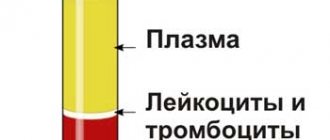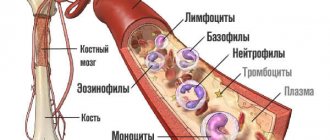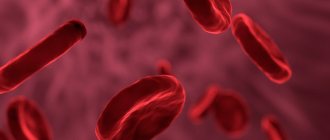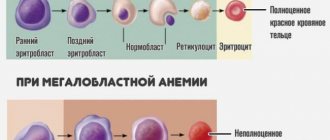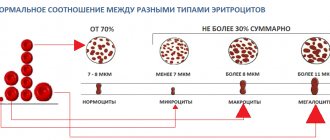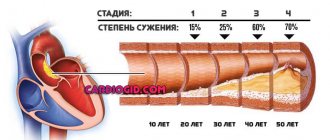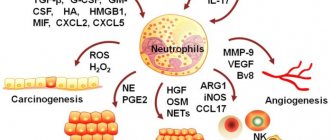Many stylists and makeup artists use fake blood to add realism to their looks, especially around Halloween. What better way to add horror to your image than a lot of sticky and burgundy blood? We have collected a lot of recipes and prepared an answer to the question: how to make artificial blood with your own hands quickly and without problems.
You can use ingredients you have in your kitchen to create believable fake blood. In this article we will tell you how to make artificial blood at home using corn syrup or powdered sugar. You can also get a more natural consistency by using flour, which thickens as it cools.
Artificial blood made from corn syrup
To make artificial blood with your own hands from corn syrup you will need: red dye - 2 tbsp. l, red fruit juice - about 120 ml., corn syrup - about 300 grams, one tablespoon each of chocolate syrup or cocoa powder and corn starch.
Mix all ingredients at once until smooth. Close the blender for about 30 seconds, during which time all ingredients will combine and form a homogeneous mixture. You can mix in 2 steps of 15 seconds for better dissolution. If you don't have a blender, use a large food processor.
Adjust the color. Open the blender and scoop some fake blood into a spoon to evaluate the color shade. Pour some of the “syrup” onto a white paper towel to get an idea of the color. You can adjust the color by adding more dye, cocoa or chocolate syrup. For example, dye should be added if the shade is pale, but if the color, on the contrary, is too bright, more chocolate or cocoa should be added.
Think about volume. If you want the fake blood to be thicker (this will add more naturalness), add 2 times more corn syrup. In this case, you may need more dye, since the consistency will be diluted.
The mystery of “blue blood”: The tragic fate of the creator of perftoran
"Unsolved Mysteries": The Mystery of the "Blue Bloods"
Early 1980s. Soviet science is making a breakthrough. Professor Felix Beloyartsev announces the creation of an emulsion capable of performing the functions of blood - carrying oxygen throughout the body.
Have scientists really managed to recreate human blood? Nevertheless, the facts speak for themselves. Beloyartsev’s drug, perftoran, saves lives. However, unexpectedly, “blue blood” – as journalists dubbed the drug – is banned.
So what secrets does “blue blood” hide and why was the world’s first artificial substitute for human blood banned in the USSR? Read about this in the documentary investigation of the Moscow Trust TV channel.
In the midst of destruction
December 17, 1985. The frozen dacha of pharmacologist Felix Beloyartsev. Investigators are hastily turning things over and tapping on the walls. Sitting in the middle of the destruction, Beloyartsev calmly waits for this farce to end. Having found nothing, the prosecutor's office workers leave.
The professor is left alone. In the morning they will find him in the noose. The reason for the suicide of the 44-year-old scientist remains a mystery to this day. Almost all 20 volumes of the investigation are either securely hidden in the archives or destroyed.
“These matters, personal (we say in quotes - “business”) - they are still classified. Both the suicide case and Beloyartsev’s investigative case are closed, so everything I say is, as scientists say, interpolation,” explains historian Alexei Penzensky.
The search at Beloyartsev’s dacha is a consequence of a denunciation. One of his colleagues shared valuable information with the authorities: supposedly the professor was doing repairs at his dacha, and was paying the workers with alcohol from the laboratory. This accusation is insulting and ridiculous. For those who remember the 80s, it is clear that alcohol is just a reason to start checking. It gets stolen everywhere.
Photo: TASS/Pavel Smertin
Alexey Penzensky, historian: “This is the alcohol that was stolen and stored in a safe. If there was no safe in the laboratory, there was a case when the director of a chemical laboratory told me that after or during repairs the bottle became empty. They are coming. What's happened? The builders are drinking."
However, Beloyartsev is facing another charge. Rumors are spreading around the city that the laboratory management is extortionately taking salaries from employees. Of course, revelries and banquets are organized with the stolen money.
“One of the unfortunate violations of the rules that the unfortunate Beloyartsev committed was the fight for funds. This is known in Soviet science. This was the main prize. It was a carrot that laboratories, research teams, entire institutes, academies of sciences ran after these carrots.
Funds. Funds. What did our hero do? He agreed and ordered the employees to donate part of the bonus (some percentage) to the fund for their development. Project Development Fund, as they would say now,” says Alexey Penzensky.
Beloyartsev is fanatically devoted to his work. He constantly orders unique devices, paying for them with money from bonuses. All this is done with the sole purpose of creating a drug that will change history.
Blood substitute
Late 70s. The threat of AIDS looms over the world. Cases of diseases resulting from blood transfusions have become more frequent. Scientists from different countries are struggling with its artificial substitute. But only Beloyartsev succeeds. In just three years, his laboratory in Pushchino, near Moscow, begins to produce an emulsion capable of saturating the body with oxygen. The drug is called "Perftoran".
“An emulsion that could transport gases - oxygen and carbon dioxide. Why? Because this is generally the only liquid that has such a high capacity for these two gases. These properties were discovered a long time ago, back in the 40s of the last century,” explains biologist Elena Tereshina.
The press widely covers this discovery and calls perftoran “blue blood.” In 1985, Beloyartsev’s drug was nominated for a State Prize, so the persecution and suicide of its creator comes as a shock to many.
“The man was simply driven to suicide. And the man fell into these gears of this machine. He took on Goliath. And in this fight Beloyartsev had no chance. Moreover, Ivanitsky, his right hand, his, as I understand it, his closest confidant, was almost pulled into these gears. Yes, and a neighbor. In Pushchina we lived together, in the same city. He was, however, only brought to a heart attack,” says historian Alexey Penzensky.
This is especially incomprehensible to Anya Grishina’s parents. A five-year-old baby, having once escaped from her nanny, jumps out onto the roadway. It would not have been difficult to save the child if the doctors had not mixed up the donor blood. A strong reaction begins in the girl’s body. Fighting for Anya’s life is becoming more and more difficult. The last hope remains - Beloyartsev’s artificial blood. But the drug has not yet been tested.
Photo: TASS/Artem Geodakyan
“Perftoran - it has already been fully tested on animals, documents were sent to the pharmaceutical committee for permission to clinical trials, but permission has not yet been received. And Mikhelson, who was in charge of this department at the clinic, called Beloyartsev, and Beloyartsev, at his own risk, brought two bottles of perftoran,” says biophysicist, Felix Beloyartsev’s colleague Genrikh Ivanitsky.
The girl remains alive. And perftoran demonstrates its undeniable advantage - it suits everyone without exception, while ordinary blood has an amazing property: when transfused, it accepts only its own group, and fights with someone else’s. Nevertheless, it is precisely this ability of the blood to stand guard over the body that helps it fight infection.
“Our blood is a unique liquid in its protective properties. It is simply impossible to think of anything else, how quickly do leukocytes adapt to the pathogenic microflora that appears, how quickly they begin to work. And there are only individual cases when a leukocyte approaches and does not recognize this microflora. I see: a rod-shaped bacterium is swaying, for example, a leukocyte approaches, stands, thinks and moves away,” explains hematologist Olga Shishova.
Running through the veins
For centuries, the red substance flowing in the veins has been a mystery to mankind. To compensate for its deficiency, blood was even transfused from animals. Needless to say, many such experiments ended in death.
Today, thanks to a microscope, this mysterious substance is revealing some of its secrets. One of them is the amazing ability of blood cells (erythrocytes) to stick together under stress, forming columns of coins.
“A unique phenomenon about the gluing of red blood cells. Any tension we create creates a spasm in the body. As they say: everything inside became cold. What is a spasm? This means that the peripheral capillaries have narrowed and all the blood is in a small space. And this means that your hands are already cold, your feet are cold, your head hurts, your vision has deteriorated, your internal organs are not supplied with blood at a sufficient speed, and your red blood cells stick together, becoming “coin columns.” And their ability to deliver oxygen is impaired,” says Olga Shishova.
When red blood cells are stuck together, the blood becomes thick and has difficulty passing through the smallest capillaries. And in such a situation, the artificial substitute again proves its superiority over nature. Perftoran breaks up the “coin columns” of red blood cells, improving blood circulation.
“This is a very big problem, how to destroy this stasis, how to destroy these “coin columns.” And it turned out that perftoran has the ability to destroy this. They say that... The exact mechanism is not known, but they say that there are two components at work: the fluorocarbons themselves and the surfactant on which this perfluoran is made. The surfactant destroys the columns, and fluorocarbons transport gases,” says Elena Tereshina.
And yet, the main advantage of perftoran is that it does not come into conflict with the patient’s blood. Why? Everything is very simple. Particles of “blue blood” are so small that immune cells simply do not notice them.
“If foreign proteins enter the body, the blood begins to pull them out, and the person’s temperature rises. Well, the flu, for example, or any infection that enters the body. And perfluorocarbons - if they are broken down very finely, they will not be recognized by the formed elements that provide blood protection,” says Henryk Ivanitsky.
Check by Afghanistan
The first successful use of perftoran should bring glory to its creators. But instead, rumors are spreading throughout Pushchin that Beloyartsev is testing the drug on children and mentally retarded patients in boarding schools. And that the testing grounds for the experiments were hospitals overflowing with wounded from Afghanistan. What's really going on?
“There was a war in Afghanistan, and in difficult clinical conditions there was not enough donor blood, and therefore one of the heads of the department (Viktor Vasilyevich Moroz) - he did it at his own peril and risk, however, with the permission of his superiors, there is still discipline in the army. He took bottles of this perftoran with him to Afghanistan,” explains Genrikh Ivanitsky.
"Blue blood" is being transfused to several hundred wounded in Afghanistan. Once again, the use of perftoran gives great hope. Finally, on February 26, 1984, the USSR Pharmaceutical Committee gave permission for clinical trials of the drug. But soon after this, a criminal case was opened against Beloyartsev. The tests stop. At the same time, the events taking place around the “blue blood” are shrouded in secrecy. Why was perftoran banned?
“Brezhnev’s Soviet Union is a confederation of clans. No one there was interested in how talented you were. One thing was important: how strong your cover was. And do you have someone in the Central Committee, or even better, do you have a personal patron in the Politburo? And those who managed to reach the top and establish good relations prospered,” says Alexey Penzensky.
Photo: TASS/Artem Korotaev
Beloyartsev does not have such cover, so several denunciations to the KGB trigger a chain of tragic events. But who decided to settle scores with the scientist? Surprisingly, there would be a lot of people willing. The professor is perceived as a tough leader. But who else would force their subordinates to give up part of their bonus to purchase laboratory equipment? Maybe that’s what they remembered him for.
“Now they shrug their shoulders: “Well, just think, 20 percent of the bonus.” Do not understand. In the 80s, the prize was sacred. It’s there, I don’t know what exactly he had, they, in his team, what kind of bonuses there were, how often they were paid, and, again, they don’t name the amount, but it was sacred. And to encroach on the prize like this was a gross violation of the rules,” Penzensky asserts.
The machinations of competitors
But there is another version: in parallel with Beloyartsev, they are trying to create artificial blood at the Institute of Hematology and Blood Transfusion. True, to no avail. And then the employees of this establishment write a denunciation against the competitor.
However, the case is unlikely to be motivated by ordinary envy. In the late 70s, Soviet intelligence managed to obtain samples of artificial blood that the Japanese were developing. The drug is called "Fluasol". The Institute of Hematology receives from the Ministry of Defense the task of bringing it to fruition, and in the shortest possible time.
Elena Tereshina worked at the Institute of Hematology at that time. Today for the first time she speaks about the background of the conflict.
“Well, if it’s my personal opinion, I don’t think the KGB played a role here. Why? Because, in principle, who brought this bottle of Fluasol? These were scouts who found out that there was such a direction, they quickly brought this bottle. The Ministry of Defense was working. It was a government order. What did Beloyartsev do that the KGB would pay attention to - I think there was nothing like that,” says Elena Tereshina.
What happens? The Institute of Hematology is conducting secret development for the military department. Suddenly Beloyartsev appears, who creates artificial blood, spending about three years and mere pennies on it. The managers of the secret development must have gone through some very unpleasant moments, making excuses to the customer for their own failure.
“Because they began to put pressure on them: “Why did you spend so much money and do nothing?” Yuri Anatolyevich Ovchinnikov (then he was vice president) - in fact, at first he had a very positive attitude towards this work. And we even had friendly relations, and everything was fine. But when these conflicts began, he said: “You know what, give up this job altogether. Why the hell is it needed, because there will be so many troubles later,” says Heinrich Ivanitsky.
But Beloyartsev’s competitors risk not only their reputation. We are probably talking about millions of investments, which stop with the advent of perftoran. It is not surprising that a denunciation of the scientist soon falls on the desk of a KGB investigator.
And while the professors are being harassed by humiliating inspections, all research on perftoran has been suspended. Beloyartsev is acutely worried about the fact that he cannot defend his name. After another search, he takes his own life, leaving a suicide note: “I can no longer live in the atmosphere of this slander and betrayal of some employees.”
“He defended his doctoral dissertation at the age of 33, which is an extremely rare case in medicine. Therefore, he was spoiled by fate, and this, apparently, was the first stressful situation in his life. This is the first point. The second point was that there was a terrible resentment, because it seemed that everything was the other way around: people did an excellent job in a short time, but instead they not only stopped the work, but also labeled him a swindler and so on.
And the third point - this was to some extent connected with specific circumstances, that he was alone at the dacha. Because if someone were nearby, he would have discharged himself simply by talking, perhaps,” says Henryk Ivanitsky.
Main enemy
But that's not all. Influential hematologist Andrei Vorobyov is an opponent of artificial blood. What is the reason for his hatred of perftoran? There is no answer to this question. One thing is clear: this man did everything to ensure that the “blue blood” never entered production.
“Hematology Research Center, VGNC,” he became its director. He was an opponent of this trend in general, a very tough opponent. In general, when he had his inaugural speech, when he became the director of this institute, he said: why all these infusion drugs? You can also pour in sea water - they won’t die,” says Elena Tereshina.
The official was not mistaken in this. Sea water really wouldn't hurt anyone. After all, human blood is surprisingly similar in composition to this brackish liquid.
“The composition of blood is almost completely identical to the composition of sea water, except for the salt content. This question remains a big mystery today. None of the experts can intelligibly answer this question - why our blood coincides with sea water. Moreover, we all know from our own experience that we can stay in sea water for a long time, while the skin does not deform or suffer in any way. But, if we are in fresh water for a long time, the salts are washed out, and the skin begins to wrinkle, and we feel uncomfortable,” says orientalist Pyotr Oleksenko.
Photo: TASS/Boris Kavashkin
This paradox must be explained by the fact that life originated in the ocean. But is that the only thing? Thanks to the study of the mysterious properties of blood, scientists make amazing discoveries. One of them belongs to professor of genetics Oleg Manoilov.
In the 20s of the last century, he collected in his laboratory the blood of representatives of almost all races and nationalities living on Earth. Manoilov forces all blood samples to react with a special solution, the composition of which is known only to him. And he gets amazing results: the blood of people of some nations changes its color to blue when reacting. The remaining samples remain unchanged. But what conclusions follow from this?
“That is, depending, perhaps, on race or ethnic type, the blood changed its color. But later a conclusion was made, or, most likely, a hypothesis was put forward by genetic scientists, that the races of people did not originate from one ancestor, but there was a different source, and that different races, accordingly, have different blood,” says Pyotr Oleksenko.
Gift of ancestors
It is possible that once upon a time there lived on Earth creatures in whose veins there was a substance that was not red, but a completely different color - blue blood. This expression originated in medieval Spain to refer to aristocrats. Their pale skin showed bluish veins, which distinguished them from the dark-skinned commoners. However, soon, according to some scientists, this expression will have to be taken literally.
Petr Oleksenko is an expert on ancient Eastern civilizations. He believes that the ancestors of modern civilization were indeed blue blood, and in the most literal sense.
“Today we know that the phenomenon of blue blood is not just words, so-called blue blood, but, apparently, in fact, in the history of mankind, blue blood once existed in the process of human evolution. Today we know that our red blood is primarily red because respiratory pigments are based on hemoglobin, and hemoglobin is based on iron ions,” says Oleksenko.
Blood, which contains copper ions, has a blue or blue color. Based on the metal vanadium, it will be yellow or brown. But why is perftoran called “blue blood”? Indeed, contrary to the erroneous belief, it is white in color and looks like milk. It turns out that the whole point is that the veins of the person to whom this emulsion was transfused acquire a bluish tint.
“When you pour the white emulsion into the veins, it shows through the veins in your arm with a blue color. Our veins are so blue. Blue - because there is red blood. And if you pour in a white emulsion, they will be a pale blue color. That’s why it got its name – “blue blood,” explains Elena Tereshina.
So, work on perftoran was stopped due to persecution of Professor Beloyartsev. But is this the reason for the ban? Several documents from the criminal case, which miraculously leaked to the press, provide unexpected details: when trials of the drug on patients at the Vishnevsky Hospital began in 1984, for some reason no one recorded their results. But what do the testers want to hide?
Vladimir Komarov is an immunologist who participated in the medical programs of the KGB and the FSB. In his opinion, perftoran was banned due to its significant shortcomings.
“It had a large molecular weight, it did not penetrate into the tissues themselves, and it seemed to be in a vessel. But intimately, with the tissue of the affected organ, it did not reach there. He couldn't transmit oxygen deeply. And a possible situation arose when there was a lot of oxygen in the blood itself, but there was none in the tissue. Moreover, I again emphasize that molecular oxygen is a chemically inert molecule. It is not capable of being absorbed by this tissue,” says Vladimir Komarov.
Photo: m24.ru/Vladimir Yarotsky
The materials of the criminal case also noted that perftoran was administered to 700 sick and wounded people in Afghanistan. And this was before the drug was officially approved. Investigators learned that more than a third of them died. Have scientists rushed to declare that perftoran is harmless?
“Perftoran is about the same as a Teflon frying pan or saucepan. These fluorates themselves affect blood viscosity and can affect metabolic changes in a pathological way, because this is again a foreign element. And I heard that this drug can also have a negative effect on reproductive functions in women,” says Vladimir Komarov.
Doctors' mistake or total failure?
During the investigation, KGB officers learn about the death of the experimental dog Lada. The scientists were extremely proud that during the experiment, 70 percent of her blood was replaced with perftoran. The autopsy results are horrifying: the four-legged animal has the last stage of liver cirrhosis. Was the professor really in a hurry to receive the notorious State Prize? And yet, it was never possible to prove that “blue blood” destroys the liver.
“Fluorine compounds are completely harmless, they are metabolically inactive and physiologically inactive in the sense that they do not cause any harm to the body. Their only negative quality was that they accumulated in the liver. Liver macrophages captured these particles, and compounds were selected that would be quickly removed from the liver,” says Elena Tereshina.
The unfortunate dog was probably infused with an experimental sample of perftoran. And the wounded in Afghanistan die because their wounds are incompatible with life. And yet, “blue blood” is able to compete, and quite successfully, with ordinary humans.
So why was perftoran banned in the Soviet Union? Many are still convinced that the case against their boss was fabricated. And not just anywhere, but in the KGB itself. The professor, due to his duty, is forced to receive foreign delegations, so he is approached with an urgent request - to transmit reports on meetings with foreign colleagues to the authorities.
Historian Alexey Penzensky conducted his own investigation and discovered an interesting fact in Beloyartsev’s biography, which is almost never talked about.
Photo: TASS/Valery Matytsin
“He had to receive foreigners, travel abroad, carefully monitor who communicates with foreigners among the delegates, so that foreigners are not shown people, so that they do not know about their existence at all, those who are conducting secret developments. Attend all meetings. Many things. Well, of course, write. Not exactly denunciations. What does denunciation mean? Denunciations are written by amateurs. And these people called the report, he is a full-time employee of the authorities. Institute department for work with foreigners. At any institute,” says Alexey Penzensky.
Beloyartsev's independent character rebels against such a need. The professor resolutely rejects the KGB's proposal. And what followed the refusal in such a case is not at all difficult to guess.
“If he opposed the appointment from above, as, for example, Beloyartsev opposed the appointment of deputy director for work with foreigners. Naturally, what a position it was! She was a KGB person through and through. He objected. The appointment took place anyway, as far as I understand. But he received a “tick” in his personal file,” explains Alexey Penzensky.
KGB pressure
That's when the problems with the KGB begin: interrogations of Beloyartsev's subordinates, searches of his house, absurd accusations. The tragic ending at the scientist’s dacha puts an end to this story. But driving to suicide is not too cruel revenge on an intractable scientist?
Not to mention sabotage on a national scale. Did the security officers really decide to take such a step? The reality turned out to be sadder and more terrible: the scientist came under attack because of his closest associate.
Genrikh Ivanitsky is one of the creators of perftoran and the right hand of Felix Beloyartsev. Today, for the first time, he explains the reason for the scandal with the KGB. Who would have thought that the notorious housing issue intervened in the matter.
“I was the director of the center, and when we delivered each new house, we had to allocate a certain percentage to military personnel who were demobilized. Then they gave a certain percentage to the builders, the rest went to the research workers, and sometimes (very rarely) they gave a certain number of apartments to employees who are in law enforcement agencies,” says Ivanitsky.
The era of socialism. Apartments are not sold, but distributed. Ivanitsky combines work on perftoran with the position of director of the Pushchino Scientific Center. And in this capacity, he has the right to distribute apartments in new buildings to his employees. Following unwritten laws, from time to time he donates housing to KGB officers. But one day a scandal breaks out around such an apartment.
“Then an employee who worked here, in the State Security, in the center itself (one of the employees), told me that they come there, organize drinking parties, bring some women. We went and opened this room and found that the entire table was filled with bottles and so on. I said that we are taking this apartment, because with the shortage of apartments that exist, in general, we need such an apartment more than you do. Later they told me: “You're crazy! How did you immediately…” But nevertheless, I took such a step,” recalls Heinrich Ivanitsky.
Photo: TASS/Yuri Mashkov
Then the organs fall on both creators of the “blue blood”. Moreover, Beloyartsev, as the project manager, suffers much more. After his death, attacks against Ivanitsky continue.
Meanwhile, work on perftoran is temporarily prohibited until the investigation is completed. According to this version, it turns out that a drug with an impeccable reputation simply became a hostage to the conflict. But then, where do the rumors come from that perftoran can cause cancer?
“I think that as a foreign element, everything foreign can cause and enhance cancer formation, let’s say. That is, here it is clear that if we worsen metabolism, then we first of all worsen oxygen nutrition. And cancer loves to live where there is no oxygen,” says Vladimir Komarov.
In some animals that received blue blood injections, suspicious nodules were found on the images. The drug is sent for research to Kyiv. Scientists are studying the effects of perftoran on rats. However, it cannot be proven that it causes cancer. On the contrary, animals that have received artificial blood transfusions live longer than their relatives.
“Parts of mice were infused with perftoran. And they wanted to see if this part would develop all kinds of tumors. But the end result was completely the opposite, that control died after a certain period of time, and these people all live and live. And they cannot send a conclusion, because... Then, in the end, I called there and said: “Guys, why are you holding up there?” And they say: “We can’t do anything. They live with us,” says Heinrich Ivanitsky.
But, apparently, investigators are still eager to prove that perftoran is unusually dangerous. Then they resort to forgery. It's 1986. The Chernobyl disaster is on everyone's lips. The KGB officers decide to transfuse artificial blood to the liquidators of the accident, and attribute all the consequences of radiation to the effect of the drug. However, everything turns out exactly the opposite: those who were infused with the drug recover faster than others.
“They wanted to prove that he was bad, let’s put it this way, they sent him to Kyiv, and there were people there... Chernobyl just happened. And in 1998 I met a man who was a liquidator, and a friend from the KGB told him: “Let us use it for you.” And so, as he says, by chance or not, out of the entire brigade in 1998, he was the only one alive,” says businessman Sergei Pushkin.
However, despite all the positive qualities, perftoran cannot be called blood. This is an artificial emulsion capable of performing a single function - gas exchange. It is impossible to create an analogue of real blood.
“What controls this system? This cannot be said to be controlled by the brain. What are the control parameters? Therefore, I believe that blood is the most mysterious organ. Textile. Or an organ. You don't know what to call him anymore. Both tissue and organ, because it has its own functions, it’s not just some set of cells,” explains Elena Tereshina.
Spiritual substance
People have long believed that blood is a spiritual substance. Surprisingly, today scientists confirm this guess. Even when separated from a person, blood recognizes its owner. The red blood cells seem to be attracted to him, wanting to reunite with him. Under a microscope, scientists observe how the properties of blood change during prayer.
Olga Shishova, hematologist: “Amazing. I sometimes do this: I take a drop of blood, look at it and, if I see a lot of problems, I tell the patient: “Now pray. Now meditate. Now calm your brain. And after a while I will take blood from you.” And it turns out that, firstly, we see what dramatic changes when a person comes into concentration, when he begins to understand himself a little in this world.
Maybe that’s why the “blue bloods” went through such a difficult path. Its creators challenged nature and were as if punished by higher powers for this. In the early 90s, the modern history of Russia begins and the ban on perftoran is lifted.
Nevertheless, the fate of the “blue blood” will continue to be difficult. State funding will cease, scientific laboratories will survive as best they can. “Blue Bloods” will be bought by a private company.
Photo: m24.ru/Vladimir Yarotsky
Sergei Pushkin opened his own production of perftoran in the early 90s. However, the income from the “blue blood” turned out to be less than could be expected. This is all due to the distrust of doctors who cannot forget Beloyartsev’s disagreement with the authorities.
“It was 1997. That is, the drug was already registered, a registration certificate was received, but there was no license for release. This was precisely the difficulty, because all the doctors remembered her. And the drug had to prove that it really works, that there are no dangers of using perftoran, at least about which were written then, in the 80s,” says Sergei Pushkin.
Today, perftoran is produced in limited quantities. Donated blood is still transfused in hospitals. And “blue blood” is used in small doses in cosmetics. Why did perftoran suffer such a sad fate? The reason is simple: complex emulsion production, packaging under sterile conditions - all this is expensive.
“His life as a blood substitute is gradually beginning to fade away. But the difference here is that for blood replacement you need a lot of perftoran, but as a therapeutic drug you need very little, because when blood replacement occurs, you need to pour 20 milliliters per kilogram of weight in case of blood loss, but here two or three milliliters per kilogram of weight is enough in order to restore various functions. But a lot of things were also revealed there related to the treatment of burn injuries and so on. So his fate is twofold,” – Henryk Ivanitsky.
Today we have learned how to treat donor blood so that it does not come into conflict with the victim’s blood. Still, perftoran lost the fight. What nature created once again turned out to be more perfect than all human attempts to recreate something similar in the laboratory.
Plot: City stories
Imitation blood from powdered sugar
To make imitation blood similar to the real thing using just powdered sugar you will need:
- Powdered sugar in the amount of 450 grams
- Red coloring (food coloring) - 2 tbsp.
- Cocoa - 1 tbsp.
- Water - 240 ml. or 1 glass
First, mix the water and powder for about thirty seconds. You may need to pulse to break up larger chunks. The powder should completely dissolve in water.
Pour in two tablespoons of coloring, close the lid and mix until the coloring is evenly mixed. Then add one spoonful of cocoa and mix thoroughly again. This will help the mixture thicken a little and give the red a more realistic hue.
Remove the lid and scoop some of the mixture into a spoon. Drip it onto a paper towel to get a better idea of what the color looks like. To get the shade you want, add more dye or vice versa - cocoa to get the shade you want.
You can fill a plastic bottle and store it in the refrigerator until better and more fun times. It’s plastic, so it’s easier to pour it on yourself, as the mass will thicken.
Bloody Halloween Traditions
In order to conduct a “vampire” photo shoot or create a convincing image of a beautiful vampire for Halloween, you don’t need real blood at all. Resorting to purchased blood lying on the shelves in joke shops is also not always convenient.
Luckily for most Halloween fans, there are many ways to make fake blood. As arterial, venous and capillary, food, non-food and “ocular”, fresh and coagulated, drying and not drying.
Blood on Halloween for photo shoots and creepy competitions should look like natural blood. In addition, it can be stored for a long time, be harmless to health, easy to wash and (ideally) taste good. Since blood for Halloween is an attribute without which the holiday is not a joy, let's look at several basic ways to prepare artificial blood at home.
Fake blood from flour
Fake blood can be made completely real in appearance! No one will even determine that you are using fake blood, because it will be very voluminous. To do this you will need:
- Flour - 1 tbsp.
- Water - 1 glass (240 ml)
- Food coloring (red) - 2 tbsp.
Take a small saucepan and pour 1 cup of water into it. Add 1 tablespoon of flour to the water and whisk the mixture to break up any chunks. You need to dissolve the flour in water. If you don't have a whisk, you can use a fork to quickly stir the water and flour.
Heat the mixture. Turn the switch to maximum heat and hold the pan until the water and flour begin to boil. Then reduce the heat to medium-low to reduce the simmer. Boil the mixture for 30 minutes. Turn off the heat and let cool. Preparing this mixture will make your fake blood voluminous.
Dilute the cooled mixture with dye and mix the paint thoroughly until the color is completely uniform. You can add more dye for a brighter blood color.
Fake blood made from beets and gelatin
To make fake blood, you can use simple and cheap ingredients - beets and gelatin (can be replaced with starch). Use about 15 grams of gelatin per liter of water, although the instructions require 25, otherwise you will get a too thick consistency. The gelatin does not need to be stirred thoroughly, as the clots will add even more realism.
Grate the beets on a very fine grater and place in a saucepan. Pour in water so that there is about a centimeter of water above the puree. Cook for 5-7 minutes over low heat, and then strain through cheesecloth. All you have to do is mix gelatin with beet juice and your makeup is ready!

